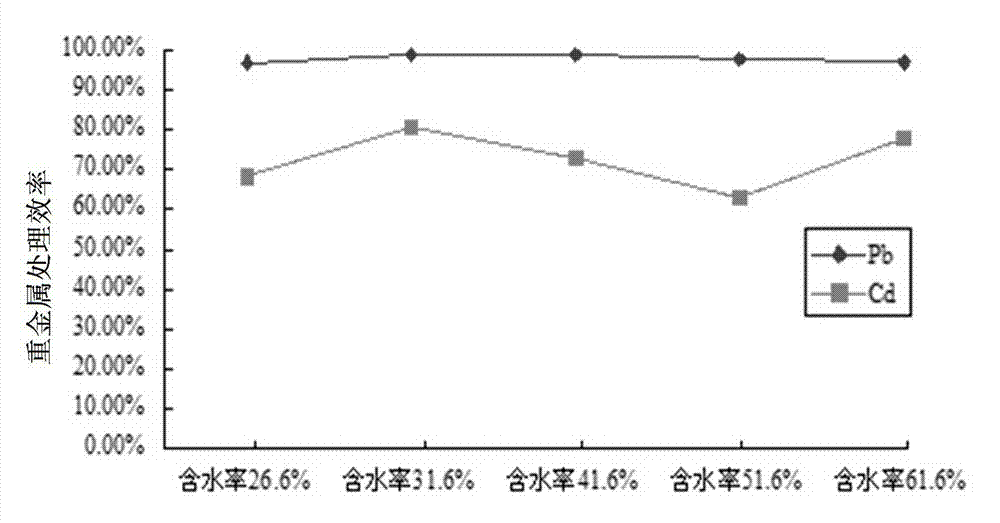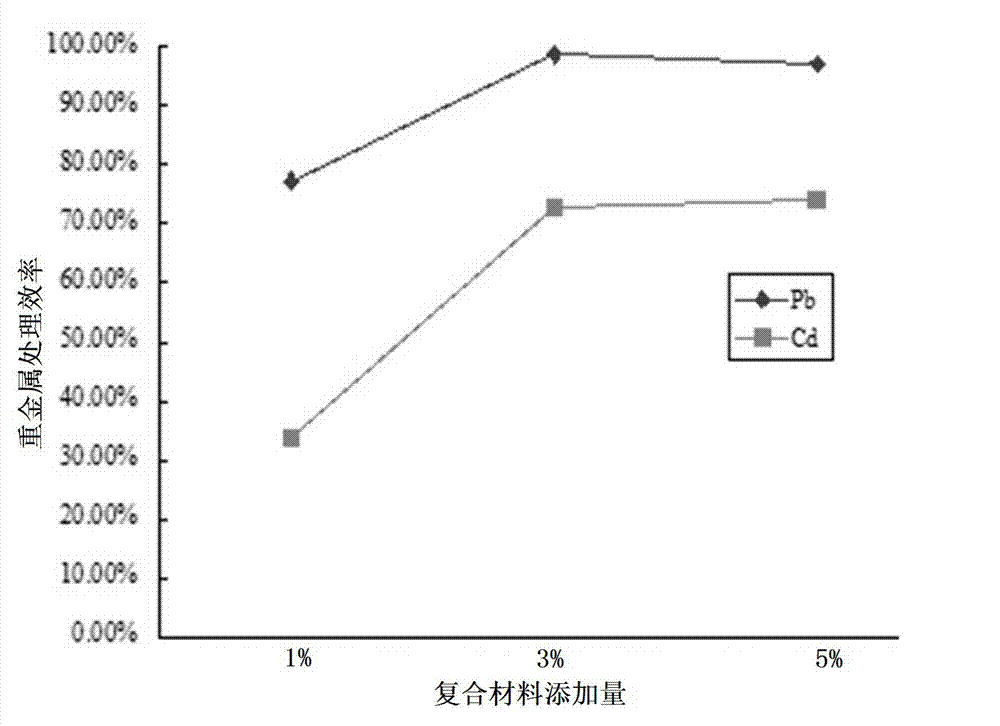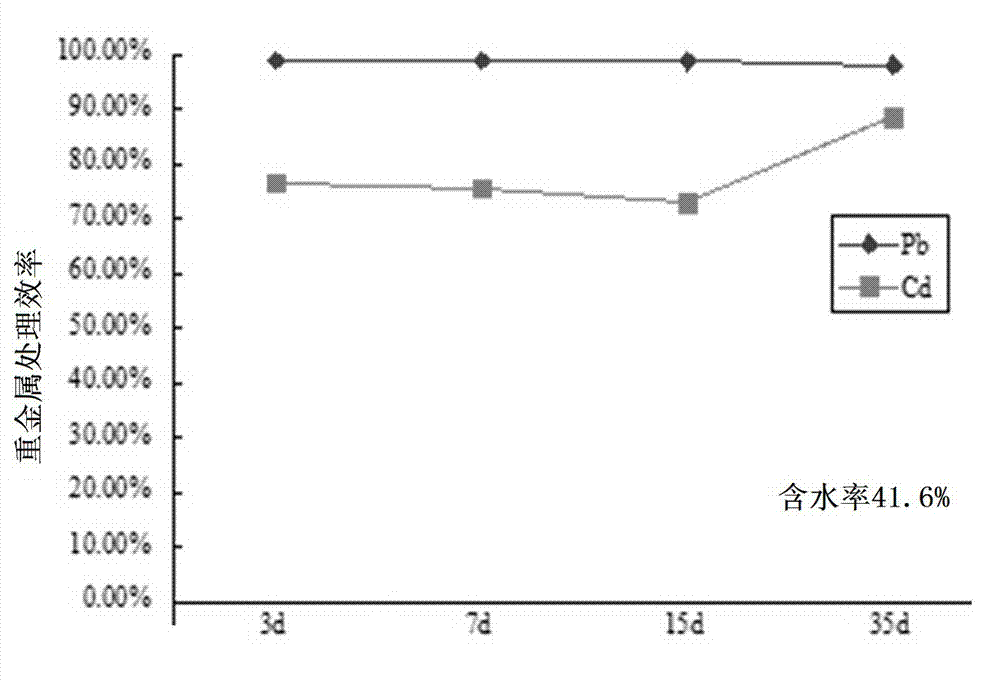Hydroxyl calcium phosphate-active carbon composite material and application thereof
A technology of calcium hydroxyphosphate and composite materials, which is applied in the field of calcium hydroxyphosphate-activated carbon composite materials, can solve the problems of poor adsorption stability and inefficient use of materials, and achieve remarkable effects, low repair costs, and low preparation prices
- Summary
- Abstract
- Description
- Claims
- Application Information
AI Technical Summary
Problems solved by technology
Method used
Image
Examples
Embodiment 1
[0026] Example 1: Preparation of calcium hydroxyphosphate-activated carbon composite material described in the present invention. In this embodiment, activated carbon is used as a carrier, and calcium hydroxyphosphate is compounded with activated carbon particles during the stirring process through the chemical reaction of calcium oxide, phosphoric acid solution and alkali solution. The specific implementation process is: 1) According to the molar ratio of calcium oxide: phosphoric acid = 5: 3, calcium oxide is added to the phosphoric acid solution suspended by activated carbon, and the reaction is stirred for 2 hours; 2) After that, the pH of the solution is adjusted to 8 with lye Between ~9, continue stirring to compound calcium hydroxyphosphate and activated carbon. After completion, place the prepared material at room temperature for at least 8 hours for aging; 3) Finally, wash the prepared material and centrifuge it. Dry at 60°C for 8 hours, and grind the dried material...
Embodiment 2
[0027] Example 2: Conservation test of calcium hydroxyphosphate-activated carbon composite material in the present invention on soil polluted with different moisture content. The lead and cadmium contaminated soil of a mine was selected as the contaminated soil sample of this experiment, and the concentrations of lead and cadmium in the tested soil were 1600mg·kg -1 , 40mg·kg -1 . During the experiment, 100g of lead-cadmium-contaminated soil was weighed, 3g of the above-mentioned composite material was added, and an appropriate amount of tap water was added according to the moisture content in the soil of 26.6%, 31.6%, 41.6%, 51.6% and 61.6%, and stirred until uniform. sampling. Determination of the leaching concentration of lead and cadmium in soil (TCLP method). Such as figure 1 As shown, after testing, the fixation rate of exchangeable lead in the soil after 15 days was 98%, and the fixation rate of exchangeable cadmium was 72%.
Embodiment 3
[0028] Example 3: Conservation test of contaminated soil with different additions of calcium hydroxyphosphate-activated carbon composite materials described in the present invention. The lead and cadmium contaminated soil of a mine was selected as the contaminated soil sample of this experiment, and the concentrations of lead and cadmium in the tested soil were 1600mg·kg -1 , 40mg·kg -1 . During the experiment, 100g of lead-cadmium-contaminated soil was weighed, 1g, 3g, and 5g of the above-mentioned composite materials were added respectively, and an appropriate amount of tap water was added according to the moisture content of the soil at 41.6%, stirred until uniform, and samples were taken in 15 days. Determination of the leaching concentration of lead and cadmium in soil (TCLP method). Such as figure 2 As shown, after testing, the fixation rate of exchangeable lead in the soil after 15 days was 98%, and the fixation rate of exchangeable cadmium was 72%.
PUM
| Property | Measurement | Unit |
|---|---|---|
| particle size (mesh) | aaaaa | aaaaa |
Abstract
Description
Claims
Application Information
 Login to View More
Login to View More - R&D
- Intellectual Property
- Life Sciences
- Materials
- Tech Scout
- Unparalleled Data Quality
- Higher Quality Content
- 60% Fewer Hallucinations
Browse by: Latest US Patents, China's latest patents, Technical Efficacy Thesaurus, Application Domain, Technology Topic, Popular Technical Reports.
© 2025 PatSnap. All rights reserved.Legal|Privacy policy|Modern Slavery Act Transparency Statement|Sitemap|About US| Contact US: help@patsnap.com



